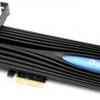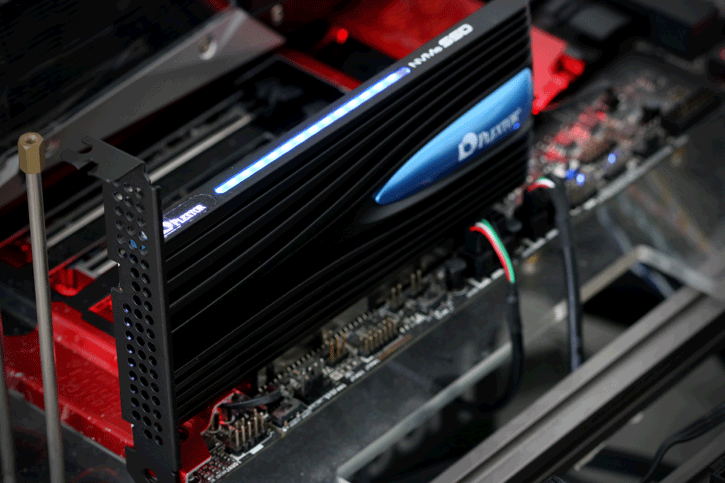Specifications & Features
Specifications & Features
Plextor has released several of these puppies all as M8S unit, but separated into several SKUs. In addition to providing the PCle expansion card and M.2 2280 specifications, capacities of 128GB, 256GB, 512GB, and 1TB can be spotted. The M8Se series is powered by the latest generation NVMe PCIe Gen 3x 4 super high-speed transmission interface that delivers high bandwidth and low latency that allows sequential read/write access speeds of up to 2,450/1,000 MB/s and random read/write speeds of up to 210,000/175,000 IOPS. With NVMe 1.2 support, the M8Se significantly reduces access latency to provide faster data transmission speeds.
Plextor will also release the heatsink based M8SeG M.2 2280 version as well as M8SeGN that is just that M.2 and no heatsink. The company is to offer four volume size versions of the products initially, the 128GB, 256GB, 512GB and 1 TB models. So the sample that has arrived in our test lab is the 512GB M8SeY version of the drive with that PCIe Daughterboard and LED activated heatsink slash cover. The M8Se series will come with TLC NAND flash memory from the 15nm Toshiba NAND node. Given its size, this has to be vertical stacked NAND or V-NAND.
So what is V-NAND?
V-NAND is physical vertical NAND cell stacking not to be confused with chip stacking in a multi-chip package. In V-NAND, NAND layers, not chips, are stacked in a single IC. The good news is continued cost reduction, smaller die sizes and more capacity per NAND chip. Also, installed NAND toolsets in the wafer fabs can, for the most part, be reused, thereby extending the useful life of fab equipment. Current V-NAND stacks have 32 and even 48 cell layers vertically over one another, rather than decreasing cell dimensions to fit onto a fixed horizontal space, resulting in higher density and better performance with a smaller footprint. 64 layer (BICS) actually is going into production this year as well. With the M.2 form factor SSDs, more consumers with desktops or ultra-thin PCs can benefit from best-in-class performance and reliability of the technology.
So what is NVMe?
NVMe is also known as Non-Volatile Memory Express or the Non-Volatile Memory Host Controller Interface Specification. The idea behind NVMe is to improve the storage stack by optimizing the way an application accesses a Flash device. NVMe cuts corners by removing components within the I/O path like that good old fashioned RAID controller. To be able to make use of the new NVMe based devices inside your PC you have to have a proper driver installed, Windows 7, 8 and 10 have this NVMe protocol driver embedded. This enables NVMe devices to function within the existing operating system I/O stack protocol. On the next page we'll talk a little more about NVMe.




